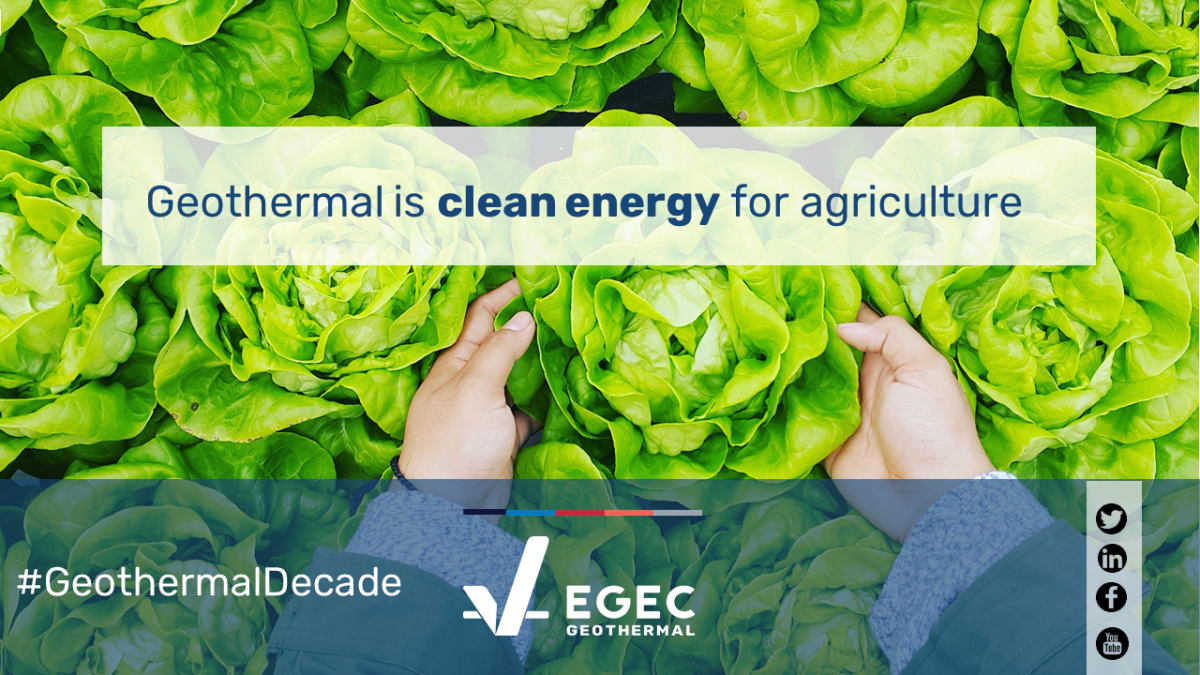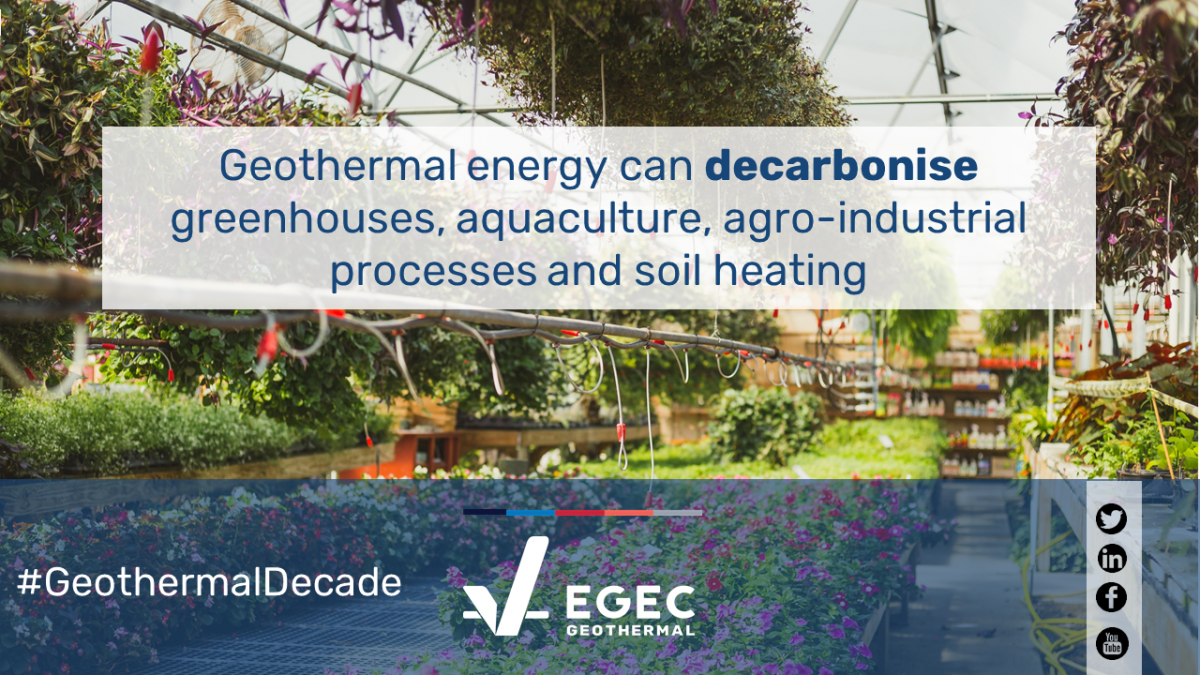With agriculture being one of the largest and most essential sectors in the EU, and globally, the use of geothermal energy can provide solutions for energy, climate, and food security.
As the agricultural sector is relied on heavily by the population, it must compensate its demands with a large amount of energy consumption and greenhouse gas emissions. However, with Europe’s plans to become carbon neutral by 2050, this provides the agriculture sector with new opportunities for clean innovation.
To reach these targets, the agriculture sector faces a new energy challenge: the search for a source that is stable, low cost, local, and environmentally friendly to combat climate change.
Since the beginning of time, we have depended on agriculture to produce food and other goods through the cultivation of plants and livestock.
Traditionally, fossil fuels have been used as the main energy resource for this sector. Much of the energy used is for low and medium level heat (less than 200°C). Therefore, geothermal energy seems like a very suitable choice. Not only is geothermal able to power this sector, but it is also renewable and accessible all over Europe. It is time for the agri-food industry to switch to a more affordable and green energy.

Geothermal energy is no stranger to the agri-food industry. It has been increasingly used for the last 25 years in such areas as greenhouses, aquaculture, agro-industrial processes and soil heating.
Geothermal energy is a clean, sustainable and renewable resource that provides energy using heat derived from the earth. Low or medium temperature geothermal heat is available all over the world, and the systems enabling its use are simple and easy to maintain. Geothermal projects are installed locally and offer heating and cooling, and storage at competitive prices.
It also increases job creation. Today, the use of geothermal (for both industry and agriculture) employs already around 9,000 people in nineteen European countries and the number is expected to grow.
The agriculture sector in the Netherlands, France and Italy perfectly demonstrate why geothermal energy is the solution the sector has been looking for.
The Dutch horticulture sector is one of the top global leaders in terms of innovation and trade with international partners being a stable pillar of the Dutch economy. While the sector heavily relies on natural gas, three professional gardeners wanted to try something new and invest in green energy to heat their greenhouses. Now in Koekoespolder, their geothermal energy system not only provides to heating purposes, but it also distributes hot water throughout their local community without emitting CO2.
Geothermal energy can be applied to various types of agriculture processes. In France, the wine cellar of Orschwiller-Kintzheim has begun to utilise geothermal. Founded in 1957, the winery wanted to maintain its traditional way of making wine, however, they also wanted to reduce their energy costs as well as their carbon footprint. Today, the winery uses state of the art equipment- in stainless steel tanks, refrigerated or reheated thanks to their geothermal system. Not only has this transition lowered their expenses but it also maintains the quality of their wine.
In Tuscany, Italy situates the Renewable Energy Food Community. It is the world’s first food community of local businesses operating in the food industry which only uses clean and renewable energy in their manufacturing cycles. They focus on producing a variety of foods and drinks from vegetables, grains, olive oil, wine and pizza. Geothermal energy is one of main energy sources used there to demonstrate the harmony between energy and food as well as between advanced technologies and high-quality artisan food production.

Geothermal provides stable and secure energy for the agricultural and food industries. However, barriers such as political, technical, and financial currently stand in the way. Through more market uptake and investments, geothermal can transform the agriculture sector and lead the way to a future that is more energy-efficient, stable, and green.
Do you want to know more? Check out EGEC’s Factsheet on Agriculture, Decarb Heat’s story on energy storage in horticulture, the IRENA Coalition Joint Statement on Renewables in Agriculture to Meet SDGs and Climate Objectives and some examples of foods produced with geothermal energy!

BE SOCIAL & SHARE